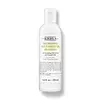What's inside
What's inside
 Key Ingredients
Key Ingredients

 Benefits
Benefits

 Concerns
Concerns

 Ingredients Side-by-side
Ingredients Side-by-side

Water
Skin ConditioningSodium Methyl Cocoyl Taurate
CleansingSodium Coco-Sulfate
CleansingSodium Chloride
MaskingCoco-Betaine
CleansingLactic Acid
BufferingParfum
MaskingPPG-5-Ceteth-20
EmulsifyingSodium Lauroyl Glutamate
Propylene Glycol
HumectantPEG-55 Propylene Glycol Oleate
Salicylic Acid
MaskingBenzoic Acid
MaskingGuar Hydroxypropyltrimonium Chloride
Skin ConditioningCoconut Alcohol
EmollientSodium Sulfate
Cocos Nucifera Oil
MaskingCoumarin
PerfumingWheat Amino Acids
Skin ConditioningFumaric Acid
BufferingHydroxypropyltrimonium Hydrolyzed Wheat Protein
Skin ConditioningPhenoxyethanol
PreservativeDisodium EDTA
Potassium Sorbate
PreservativeWater, Sodium Methyl Cocoyl Taurate, Sodium Coco-Sulfate, Sodium Chloride, Coco-Betaine, Lactic Acid, Parfum, PPG-5-Ceteth-20, Sodium Lauroyl Glutamate, Propylene Glycol, PEG-55 Propylene Glycol Oleate, Salicylic Acid, Benzoic Acid, Guar Hydroxypropyltrimonium Chloride, Coconut Alcohol, Sodium Sulfate, Cocos Nucifera Oil, Coumarin, Wheat Amino Acids, Fumaric Acid, Hydroxypropyltrimonium Hydrolyzed Wheat Protein, Phenoxyethanol, Disodium EDTA, Potassium Sorbate
Water
Skin ConditioningSodium Laureth Sulfate
CleansingCoco-Betaine
CleansingGlycerin
HumectantGlycol Distearate
EmollientSodium Chloride
MaskingPolyquaternium-10
Citric Acid
BufferingPPG-5-Ceteth-20
EmulsifyingSodium Benzoate
MaskingSodium Hydroxide
BufferingParfum
MaskingCarbomer
Emulsion StabilisingSalicylic Acid
MaskingOlea Europaea Fruit Oil
MaskingPersea Gratissima Oil
Skin ConditioningCitrus Limon Peel Oil
MaskingLimonene
PerfumingIngredients Explained
These ingredients are found in both products.
Ingredients higher up in an ingredient list are typically present in a larger amount.
Coco-Betaine is the natural version of Cocamidopropyl Betaine. It is often derived from coconuts.
Coco-Betaine is a surfactant, meaning it helps remove dirt and oil from the skin.
Parfum is a catch-all term for an ingredient or more that is used to give a scent to products.
Also called "fragrance", this ingredient can be a blend of hundreds of chemicals or plant oils. This means every product with "fragrance" or "parfum" in the ingredients list is a different mixture.
For instance, Habanolide is a proprietary trade name for a specific aroma chemical. When used as a fragrance ingredient in cosmetics, most aroma chemicals fall under the broad labeling category of “FRAGRANCE” or “PARFUM” according to EU and US regulations.
The term 'parfum' or 'fragrance' is not regulated in many countries. In many cases, it is up to the brand to define this term.
For instance, many brands choose to label themselves as "fragrance-free" because they are not using synthetic fragrances. However, their products may still contain ingredients such as essential oils that are considered a fragrance by INCI standards.
One example is Calendula flower extract. Calendula is an essential oil that still imparts a scent or 'fragrance'.
Depending on the blend, the ingredients in the mixture can cause allergies and sensitivities on the skin. Some ingredients that are known EU allergens include linalool and citronellol.
Parfum can also be used to mask or cover an unpleasant scent.
The bottom line is: not all fragrances/parfum/ingredients are created equally. If you are worried about fragrances, we recommend taking a closer look at an ingredient. And of course, we always recommend speaking with a professional.
Learn more about ParfumWe don't have a description for PPG-5-Ceteth-20 yet.
Salicylic Acid (also known as beta hydroxy acid or BHA) is a well-known ingredient for treating skin that struggles with acne and clogged pores. It exfoliates both the skin's surface and deep within the pores to help clear out buildup, control oil, and reduce inflammation.
Unlike AHAs (alpha hydroxy acids), salicylic acid is oil-soluble. This allows it to penetrate into pores which makes it especially effective for treating blackheads and preventing future breakouts.
Salicylic acid is also known for its soothing properties. It has a similar structure to aspirin and can calm inflamed or irritated skin, making it a good option for acne-prone skin that is also sensitive.
Concentrations of 0.5-2% are recognized by the U.S. FDA as an over-the-counter topical acne product.
It can cause irritation and/or dryness if one's skin already has a compromised moisture barrier, so it's best to focus on repairing that before introducing this ingredient into your routine.
While salicylic acid does not increase sun sensitivity, it’s still important to wear sunscreen daily to protect your skin.
If you are looking for the ingredient called BHA or Butylated Hydroxyanisole, click here.
Learn more about Salicylic AcidChances are, you eat sodium chloride every day. Sodium Chloride is also known as table salt.
This ingredient has many purposes in skincare: thickener, emulsifier, and exfoliator.
You'll most likely find this ingredient in cleansers where it is used to create a gel-like texture. As an emulsifier, it also prevents ingredients from separating.
There is much debate on whether this ingredient is comedogenic. The short answer - comedogenic ratings don't tell the whole story. Learn more about comegodenic ratings here.
The concensus about this ingredient causing acne seems to be divided. Research is needed to understand if this ingredient does cause acne.
Scrubs may use salt as the primary exfoliating ingredient.
Learn more about Sodium ChlorideWater. It's the most common cosmetic ingredient of all. You'll usually see it at the top of ingredient lists, meaning that it makes up the largest part of the product.
So why is it so popular? Water most often acts as a solvent - this means that it helps dissolve other ingredients into the formulation.
You'll also recognize water as that liquid we all need to stay alive. If you see this, drink a glass of water. Stay hydrated!
Learn more about Water